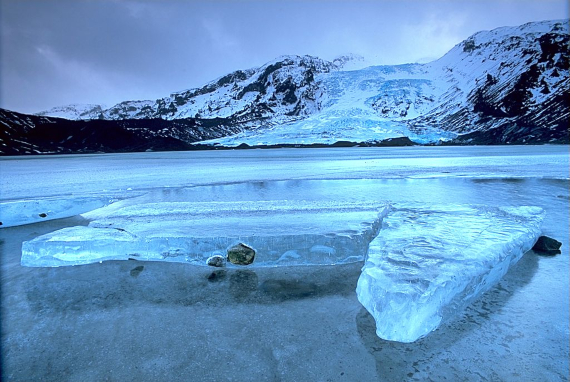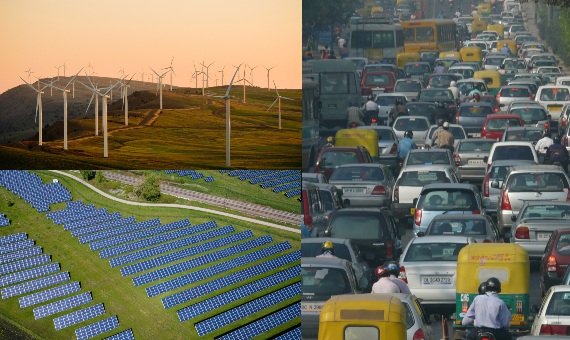Measures taken to contain the pandemic have caused the most pronounced economic collapse since the Second World War. Nevertheless, the pandemic’s impact is slight compared to the catastrophe that will be precipitated by climate change. Scientists warn us that when global warming rises above a certain threshold — around 2º C above pre-industrial temperatures — the melting of the poles could cause natural feedback processes that in turn unleash an irreversible domino-effect. Humans would then fully lose the ability to control the warming process for various centuries, or even millennia. There would be an irrevocable rising of sea levels until a new equilibrium is established. At current CO2 concentration levels (above 410 parts ppm), the equilibrium level could stand at 20 meters above current sea levels (matching levels of the Pliocene epoch, 5 million years ago) or even 60 meters above current sea levels (equivalent to Miocene levels, 15 million years ago) 1. Reaching these levels could take various centuries, but it would be beyond humankind’s power to prevent. What this means, scientists tell us, is that if we don’t stop global warming in the next 20 to 30 years, sea levels could destroy all the planet’s coastal cities, extreme climatic phenomena would increase in frequency and intensity, and it would devastate Earth’s biodiversity. 2

In the throes of the pandemic, global warming has disappeared from the headlines. But the warming of the planet continues, and the window of time to bring it to a halt is closing. The COVID-19 pandemic is further proof of the interdependence of the human race and nature. By not factoring it into our national accounts, economists overlooked nature’s role as a basic element for life and the economy 3. Fortunately, we are in the process of correcting this basic error4. Caring for human health and biodiversity should not be treated as an expense. On the contrary, it should be an investment in human and natural capital. The pandemic crisis should serve to solidify this change in perspective. The similarities between the pandemic and global warming give us additional lessons to learn from.
- Pandemics and climate change impact all of humanity. Neither viruses nor climate change recognizes borders. But they don’t impact everyone equally. Poverty and economic inequality exacerbate these problems. The poor could become the coronavirus’ reservoir of infection, as occurs with dozens of other diseases. At the same time, emissions from a single country harms all other countries. Solving global problems requires that the wealthy help the poor. And this is in their own self-interest. Because, while there is poverty, we will not be able to eradicate dozens of diseases, and it is the wealthy who stand to lose the most due to global warming. We need to find better modes of international cooperation, approaches that help remedy economic inequality. International scientific cooperation has been an essential element in fighting the pandemic; as it is and will be in the fight against climate change.

- We knew there would be a pandemic, but we weren’t prepared. Scientists have been warning us for years that it was only a question of time. We know climate change is happening, and still we aren’t prepared for it either. More than 50 years ago scientists raised the risk associated with carbon emissions. Since 1980, there has been conclusive evidence of global warming. The magazine, BioScience 5 recently published an article signed by 11,000 scientists warning that we are looking at an veritable “climate emergency.” But emissions continue on the rise. Why aren’t we doing something?
- Disbelief in the face of bad news and a lag between cause and effect are delaying action. Incredulity and denial is our natural reaction when faced with bad news. Any pretext will do to deny the evidence. With regard to the problems at hand, it is easy to second guess scientific knowledge because there is a delay between cause and effect. In the case of coronavirus, deaths occur between two and four weeks after contagion. Therefore, action is delayed by a couple of weeks, and by then the bodies have begun to pile up. With climate change, greenhouse gas emissions accumulate in the atmosphere, and the effects are only palpable 20 to 30 years later. Hence, many governments have been ignoring scientific measurements and predictions for well on 40 years. But now it is obvious that global warming is a reality. The longer we put off acting, the more difficult and costly it will be to stop. Even worse, if we don’t manage to stop the warming process within 20 to 30 years, the irreversible melting of the polar caps could be unleashed, at which point available human technology would be powerless to remedy the situation.
- In both cases we know the relationship between cause and effect, and we know what needs to be done. While there is still no proven treatment or vaccine we have to interrupt the spread of the virus by practicing social distancing and shoring up hygiene measures. To stop global warming we have to reduce the greenhouse gases that accumulate in the atmosphere. The best way is to put a price on emissions so that those who pollute pay the cost of cleaning. But also, we have to protect the most vulnerable as we make the transition. The best plan, put forth by scientists and redrafted by economists, was published in January 2019 in The Wall Street Journal 6 and endorsed by 3,500 economists, including 27 Nobel laureates. It consists of establishing an ever-increasing tax on carbon emissions and returning the funds collected to the population in the guise of “climate income.” This way, the price of carbon-intensive products will increase each year; the price of cleaner products will stay low; and the whole population will receive some climate income to help them change their consumption and investment habits. The tax would start off low in order to avoid causing an economic shock, and each year it would increase until it reaches a level of sustainable emissions. Furthermore, a tariff adjustment would be established so that a country’s businesses are not harmed by competition from those countries that do not adopt the tax. This kind of plan in already working in Canada and Switzerland. It is in legislative proceedings in the U.S. Congress, and it would be advisable for the European Union to include climate income in the European Green Deal.

- The response to COVID-19 has demonstrated that governments can implement large-scale plans that previously seemed impossible. Generous economic aid programs have been established for the general population. Governments are likewise able to change the energy model in order to guarantee the health and sustainability of the environment; this is something they ought to do. Just as occurred during the pandemic, climate change will result in victims, and the most vulnerable need protection. It has been estimated that climate income would imply an increase to disposable income for close to 60 percent of the population with the least resources 7. This means we can adopt a sustainable energy model without generating either government debt or deficit, all the while reducing inequality and poverty. This plan seems ideally suited to tackling the economic crisis caused by the pandemic.
In conclusion, the pandemic’s economic impact is slight compared to the outcome precipitated by climate change. Given our natural state of denial and the lag between cause and effect, our delayed responses to the pandemic and climate change are understandable. But global warming is now plainly in evidence. It is critical that we act because the longer we put it off, the more difficult and the more costly it will be; if we don’t act fast we could lose all control over the process. Moreover, we know how to stop global warming. Scientists and economists have devised a plan to change the energy model while at the same time tackling poverty and inequality. The European Commission should weigh in by introducing climate income in the European Green Deal because it represents the perfect policy for extracting us from the pandemic-induced economic crisis.
Notes
1. Steffen, W. Trajectories of the Earth System in the Anthropocene. PNAS August 14, 2018, 115 (33) 8252-8259. https://www.pnas.org/content/115/33/8252 Prehistoric sea levels can be checked here: http://www.columbia.edu/~mhs119/paleo_SL/
2. Recent measurements indicate that the rate of rising sea levels is accelerating. The level doubled between the second decade of the 20th century and the end of the century and has doubled again in the last 20 years, as can be seen at: http://www.columbia.edu/~mhs119/SeaLevel/ These measurements are consistent with the loss of ice mass at the poles as can be seen here: http://www.columbia.edu/~mhs119/IceSheet/
3. Embed nature in strategies to reboot economies. Nature, Vol. 581, 14 May 2020, p. 119. https://www.nature.com/articles/d41586-020-01390-w
4. The Dasgupta Review – Independent Review of the Economics of the Biodiversity. Interim Report. Gob UK. April 2020. https://assets.publishing.service.gov.uk/government/uploads/system/uploads/attachment_data/file/882222/The_Economics_of_Biodiversity_The_Dasgupta_Review_Interim_Report.pdf
5. World Scientists’ Warning of a Climate Emergency. BioScience. biz088, https://doi.org/10.1093/biosci/biz088 6.Economists’ Statement on Carbon Dividends. The Wall Street Journal. January 17, 2019. https://clcouncil.org/media/EconomistsStatement.pdf
7. Ummel, K. Impact of CCL’s proposed carbon fee and dividend policy:A high-resolution analysis of the financial effect on U.S. households. Working Paper v1.4. International Institute for Applied Systems Analysis (IIASA). April, 2016. https://11bup83sxdss1xze1i3lpol4-wpengine.netdna-ssl.com/wp-content/uploads/2016/05/Ummel-Impact-of-CCL-CFD-Policy-v1_4.pdf
Links for further reading about the climate income proposal:
- Climate income website: https://climateincome.org/en
- Citizens’ Climate Lobby (CCL) website: https://citizensclimatelobby.org/
- International Climate Dividend Alliance (ICDA) website: https://climatedividend.org/
- International Climate Dividend Alliance (ICDA) whitepaper: http://cleantech21.org/fileadmin/content/NBE/C21_WP_ClimateDividend_032019f.pdf
Comments on this publication